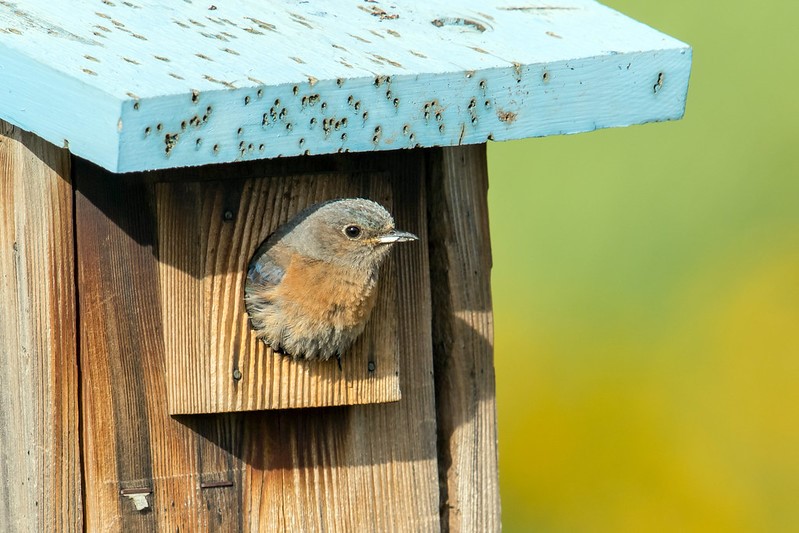~ Karla Kelly
The Western bluebird (Sialia mexicana) is a charismatic blue and rust-colored thrush that is considered a Species of Greatest Conservation Need (SGCN) in prairie and oak habitat in western Washington. It is also a conservation focus of the Avian Conservation Program at Center for Natural Lands Management (CNLM). Volunteers monitor bluebirds on CNLM preserves and other conservation lands in the South Sound region as part of a large-scale effort to increase their numbers and distribution.
Formerly common in open prairie and oak habitats, the species disappeared from much of their range, including mainland and island habitats north of Tacoma and the Olympic peninsula. Bluebirds are cavity nesters and historically built their nests in hollowed-out spaces in trees. Today, they mostly rely on artificial cavities. By building wooden nest boxes and strategically placing them on trees in prairies around the South Sound, we can compensate for the loss of available cavities which was a major factor in their decline.
Over the last five years, CNLM and its volunteers have been establishing and monitoring boxes at over six preserves and other conservation lands. In response, bluebirds have occupied new areas and increased their numbers. These conservation efforts in South Sound may also benefit other populations, such as smaller reintroduced populations to the north on San Juan Island and Vancouver Island (Canada).
All of the work that we do with bluebirds would not be possible without our dedicated volunteer nest box monitors. Their keen interest and willingness to participate ensure that bluebirds are counted and boxes are maintained, producing positive outcomes for the conservation status of this iconic species in South Sound.
Karla wrote this article in 2020 for Prairie Appreciation Day when she was an avian field technician for AmeriCorps with the Center for Natural Lands Management. She attended The Evergreen State College and earned her Bachelors of Science degree in 2017. She is now a graduate student at Western Michigan University in ornithology.








